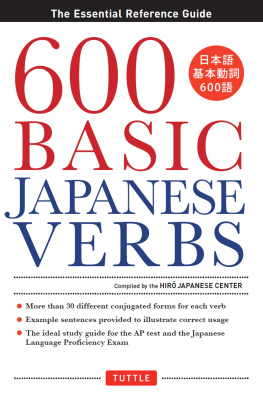First published in 1989 by Garland Publishing, Inc.
This edition first published in 2018
by Routledge
2 Park Square, Milton Park, Abingdon, Oxon OX14 4RN
and by Routledge
711 Third Avenue, New York, NY 10017
Routledge is an imprint of the Taylor & Francis Group, an informa business
1989 Edward R. Beauchamp and Richard Rubinger
All rights reserved. No part of this book may be reprinted or reproduced or utilised in any form or by any electronic, mechanical, or other means, now known or hereafter invented, including photocopying and recording, or in any information storage or retrieval system, without permission in writing from the publishers.
Trademark notice: Product or corporate names may be trademarks or registered trademarks, and are used only for identification and explanation without intent to infringe.
British Library Cataloguing in Publication Data
A catalogue record for this book is available from the British Library
ISBN: 978-1-138-30826-8 (Set)
ISBN: 978-1-315-14674-4 (Set) (ebk)
ISBN: 978-1-138-31041-4 (Volume 9) (hbk)
ISBN: 978-1-315-14395-8 (Volume 9) (ebk)
Publishers Note
The publisher has gone to great lengths to ensure the quality of this reprint but points out that some imperfections in the original copies may be apparent.
Disclaimer
The publisher has made every effort to trace copyright holders and would welcome correspondence from those they have been unable to trace.
EDUCATION IN JAPAN
A Source Book
Edward R. Beauchamp
Richard Rubinger
GARLAND PUBLISHING, INC. NEW YORK & WNDON
1989
1989 Edward R. Beauchamp and Richard Rubinger
All rights reserved
Library of Congress Cataloging-in-Publication Data
Beauchamp, Edward R., 1933
Education in Japan : a source book I Edward R. Beauchamp, Richard Rubinger.
p. cm. (Reference books in international education ; vol. 5) (Garland reference library of social science ; vol. 329)
Includes index.
ISBN 082408635X (alk. paper)
1. Education-Japan-Bibliography. I. Rubinger, Richard, 1943 II. Title. III. Series. IV. Series: Garland reference library of social science ; v. 329.
Z5815.J3B43 1989
016.37'0952dc19 | 88-30049
CIP |
STUDIES OF THE EAST ASIAN INSTITUTE, COLUMBIA UNNERSITY
The East Asian Institute is Columbia Universitys center for research, teaching, and publication on modem East Asia. The Studies of the East Asian Institute were inaugurated in 1962 to bring to a wider public the results of significant new research on China, Japan, and Korea.
This series of reference works and monographs in education in selected nations and regions is designed to provide a resource to scholars, students, and a variety of other professionals who need to understand the place of education in a particular society or region. While the format of the volumes is often similar, the authors have had the flexibility to adjust the common outline to reflect the uniqueness of their particular nation or region.
Contributors to this series are scholars who have devoted their professional lives to studying the nation or region about which they write. Without exception they have not only studied the educational system in question, but they have lived and travelled widely in the society in which it is embedded. In short, they are exceptionally knowledgeable about their subject.
In our increasingly interdependent world, it is now widely understood that it is a matter of survival that we understand better what makes other societies tick. As the late George Z.F. Bereday wrote: First, education is a mirror held against the face of a people. Nations may put on blustering shows of strength to conceal public weakness, erect grand facades to conceal shabby backyards, and profess peace while secretly arming for conquest, but how they take care of their children tells unerringly who they are (Comparative Method in Education, New York: Holt, Rinehart & Winston, 1964, page 5).
Perhaps equally important, however, is the valuable perspective that studying another education system provides us in understanding our own. To step outside of our commonly held assumptions about schools and learning, however briefly, and to look back at our system in contrast to another, places it in a very different light. To learn, for example, how the Soviet Union handles the education of a multilingual society; how the French provide for the funding of public education; or how the Japanese control admissions into their universities enables us to understand that there are alternatives to our familiar way of doing things. Not that we can often borrow from other societies; indeed, educational arrangements are inevitably a reflection of deeply rooted political, economic, and cultural factors that are unique to a society. But a conscious recognition that there are other ways of doing things can serve to open our minds and provoke our imaginations in ways that can result in new approaches that we would not have otherwise considered.
Since this series is designed to be a useful research tool, the editors and contributors welcome suggestions for future volumes as well as ways in which this series can be improved.
Edward R. Beauchamp
University of Hawaii
A work of this kind could not be accomplished without the expert assistance of professional librarians. The editors are particularly grateful to the following for guidance and services beyond the call of duty: Ms. Togasaki Tamiyo, Ms. Kurita Junko of the International House of Japan Library, Ms. Fukunaga Matsumiko of the Japan Foundation Library, Ms. Nakamura Yoshiko and Mr. Noguchi Takahiro of the Kyoto University Faculty of Education Library, and Mr. Shiro Saito of the University of Hawaii Library. We would also like to thank Gerard Sullivan, Jan Ibana, Suzanne Culter, Ida Yoshinaga, and Pamela Kido, of the staff of the Center for Japanese Studies, University of Hawaii, for help in preparing the manuscript for publication.
Errors that remain are, of course, the responsibility of the editors.









